by Margaret Sgarra, contemporary art curator
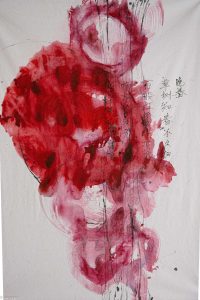
Artist, calligrapher and graphic designer, Chen Li has made word as the fulcrum of her artistic research. Letters, signs and colors give shape to a complex imagination in which poetry, reflection and creativity meet. In a society where image seems to have greater importance than content and handwriting replaced by digital, Chen Li protects its visual essence and extraordinary beauty through her works.
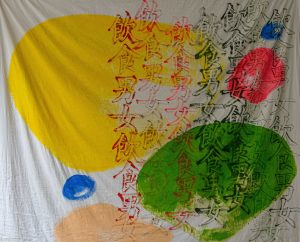
Your works have handwriting as the undisputed protagonist. When did you realize that you would become a calligrapher and what led you to prefer this artistic dimension over others?
While attending university, in 1994, I began to study graphic characters. At the same time I saw the work of great contemporary calligraphy masters: Jean Larcher and Bernard Arin in an exhibition dedicated to the Bicentenary of the French Revolution. There I understood that I wanted to work by hand, and that this was within my reach. I had been preparing all my life for that meeting. In fact, I loved reading, writing, drawing and art. Also my mom had taught me Chinese writing.
In a society increasingly saturated with visual and audiovisual incitement, the essence of calligraphy seems to have a more marginal role. In your opinion, why is it important to reappropriate and spread it?
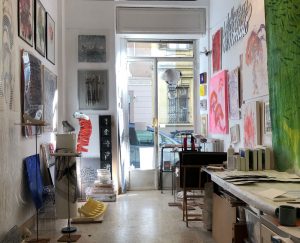
I don’t know if it’s important for everyone, indeed maybe writing has never been everyone’s interest. However, it is important that someone, even a minority, continues to study it and preserve it from oblivion. Calligraphy requires time, effort, dedication and discipline, but also love: rare qualities. Precisely for this reason it could disappear and be another of those things of the past that are studied only in books and no one remembers. For example, the writing of the ancient Egyptians, known as hieroglyphics and its spoken language, or the Etruscan language: pieces of humanity that have been lost because they were considered useless by someone at the time. Writing and its rules are connected to a language. The Chinese are well aware of this and have never given up on writing, even if it is complex in such a fast world. The Jews know this, because their identity lies in their word and writing, and because there is their past in it, but also their sense of people. The scribes of medieval monasteries knew this, as they patiently copied ancient texts considered fundamental (both content and form) so that others could have memory of them.
In your career as an artist you collaborated on projects that are very different from each other, some have given shape to works of art, while others have to do with actual graphics. Among these we remember the creation of the lettering of the title and the opening credits of “Call me with your name” by Luca Guadagnino. How does a project like this starts and how does it develop?
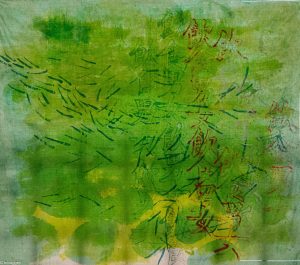
A project starts from a dialogue with a possible client to understand what he expects from me and the project. I have worked for many years with important art directors, with whom I have established long-lasting relationships. This experience has given me the skills and technical knowledge necessary for each project. In artistic planning I had many masters: from curators to international artists that I have met in my travels and residences in various countries. Talking to them, seeing them at work, taught me to communicate, to overcome fears and the unknown. Luca Guadagnino and I met during a moment of great creativity for me. I was planning a cycle of workshops with the Fondazione Prada and I was projected towards great things, with no limits of creativity. Luca is a precious, curious and sensitive art director. He was able to tell me what he wanted, and that’s not for everyone. From there the work became easy. Try after try with the only aim of making a masterpiece together. And if everyone works well, the result is not long in coming. It was also a great success because the director has applied his care and taste to everyone and everything.
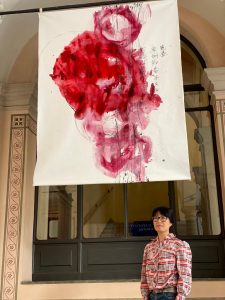 What do you think of contemporary art and who are the artists that have inspired you the most during your career?
What do you think of contemporary art and who are the artists that have inspired you the most during your career?
I am very interested in contemporary art. In fact, I have sought a purely contemporary approach to my work: moving forward, taking risks, experimenting, not looking back. This even if the rules of contemporary art are often conflicting with my practical choices. Over the years I have followed and studied the artists who strike me and in whom I identify. From Bruce Nauman for his interest in word and body, to Ai Wei Wei for his love for China and his provocative language in form and content, from Giuseppe Penone for his interest in nature, to Cesare Pietroiusti for its immateriality, up to Olafur Eliasson for the magic.
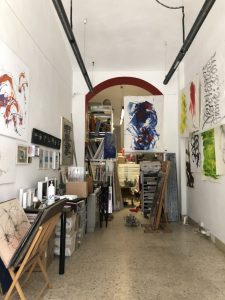
Inside your studio you can see works of various kinds ranging from almost minimal wall works to three-dimensional multi-material installations. How do you choose the materials for your works and which are your favorite ones?
The materials for the works depend on the message I want to convey. The material, in fact, is a tool. When I design, I think a lot and I try to turn into material the images that come to me. I worked with paper, plaster, plastics, resins, wood. I don’t have a favorite material, I’m interested in all of them, but I don’t want it to become an obstacle. Sometimes the choice depends on the requests of the curator, the exhibition venue, the client, the budget.
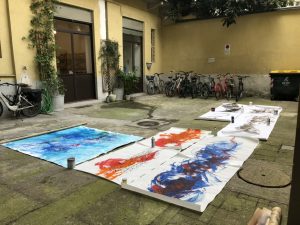 As you recently stated, next to the attention you place on writing, in your artistic research there is a deep and significant connection with the reading of essays and texts. Can you tell us what weight literature has in your work?
As you recently stated, next to the attention you place on writing, in your artistic research there is a deep and significant connection with the reading of essays and texts. Can you tell us what weight literature has in your work?
Since I was little I have been a great reader. Everything comes from the word for me: the word is evocative of universal images and contents that are part of my life in a profound way. Sometimes I copy texts, but it’s not an improvised job. They are texts that I have known by heart for many years, which I have rediscovered over time with in-depth studies and life experiences, and which I think can be included in some of my projects. The text is not a tool: it is the beginning.
What are your plans for 2023 and where will they take you?
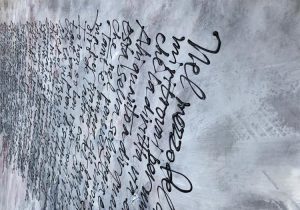
My plans for 2023 are many. Surely my big project for the next few years is on Chinese poetry and Chinese language, which I’ve been studying for many years. Reading poetry and studying it allowed me to develop a certain preparation so to have less difficulty in dealing with it. Another commitment I have made is related to relational art together with an association I belong to, “Forme in bilico”. These are projects connected to making in a plural way, non-typical artistic practices in collaboration with different subjects. From these ideas come exhibitions, workshops, ideas, contacts, as well as the possibility of training people. Instead, for other projects I can’t say anything yet, but I will keep you informed on my social channels. However, I would like to receive proposals from international curators, because something beautiful is born every time.